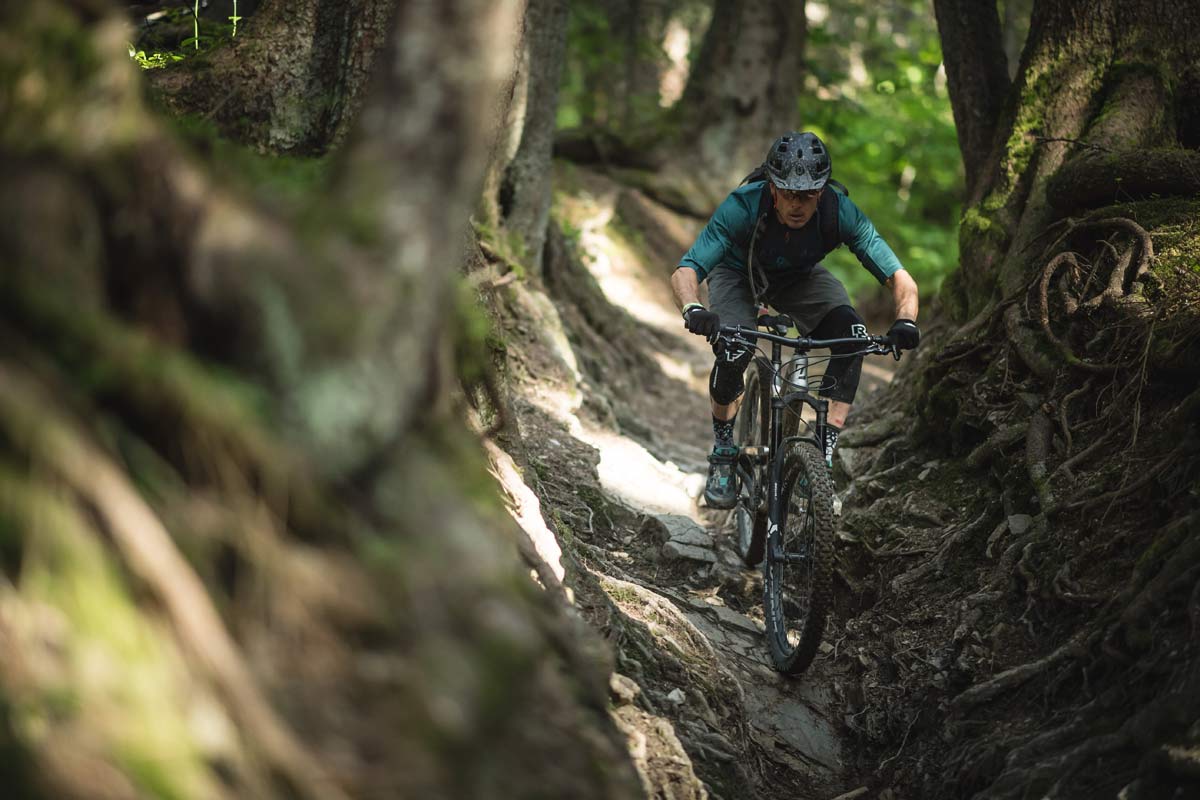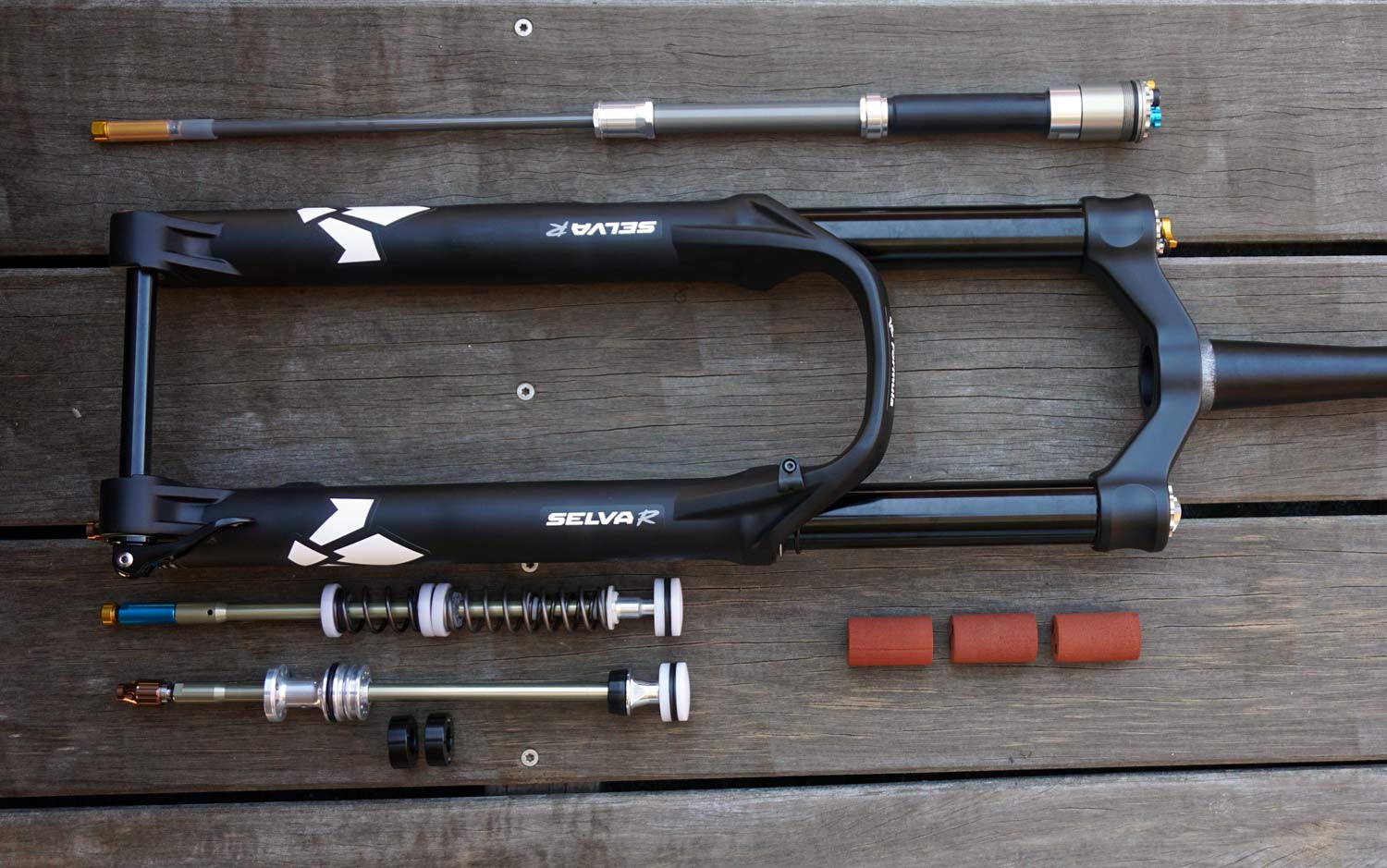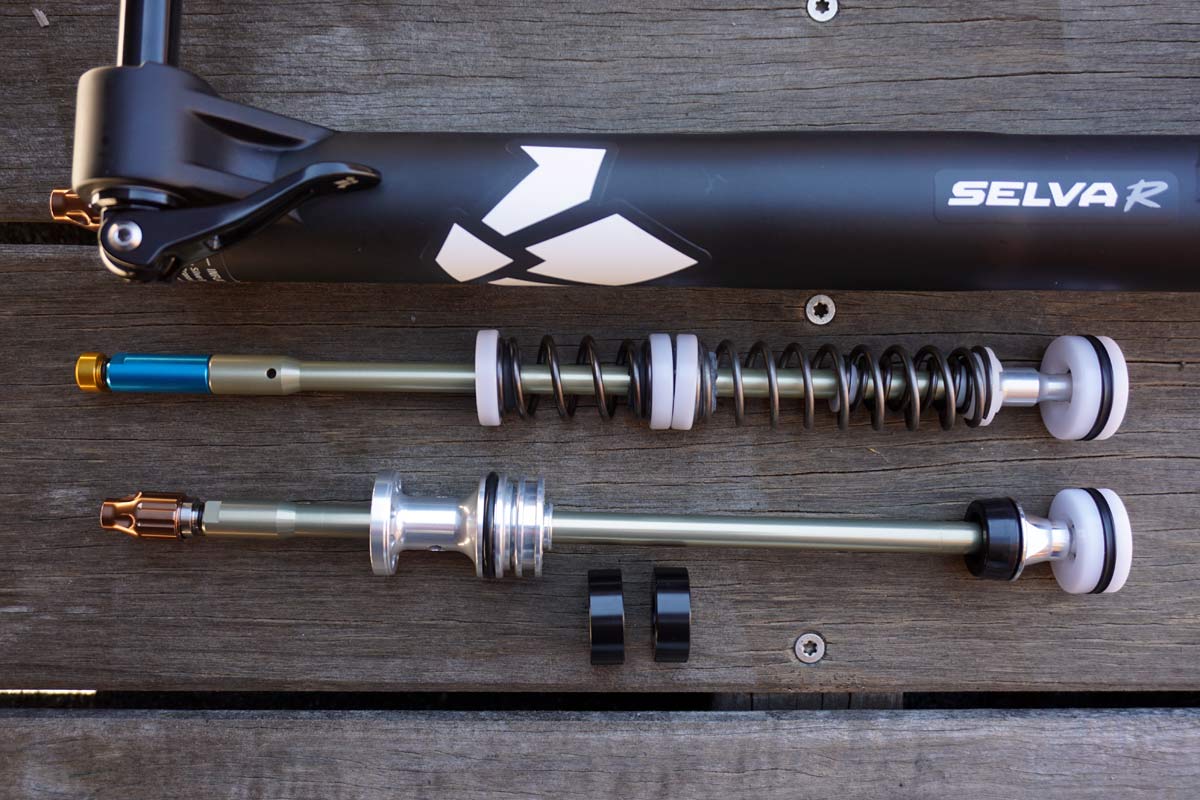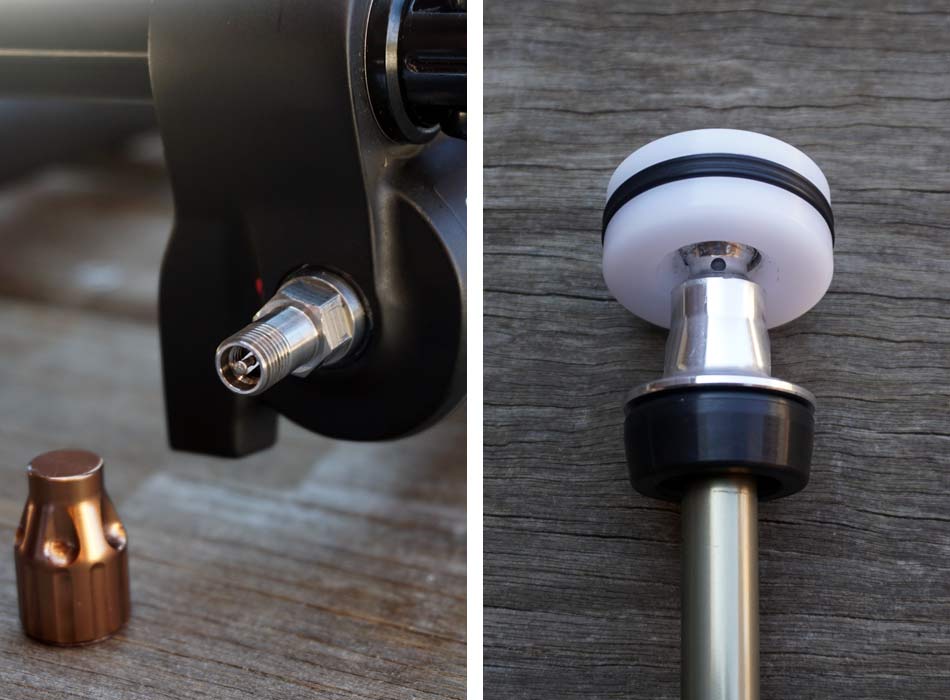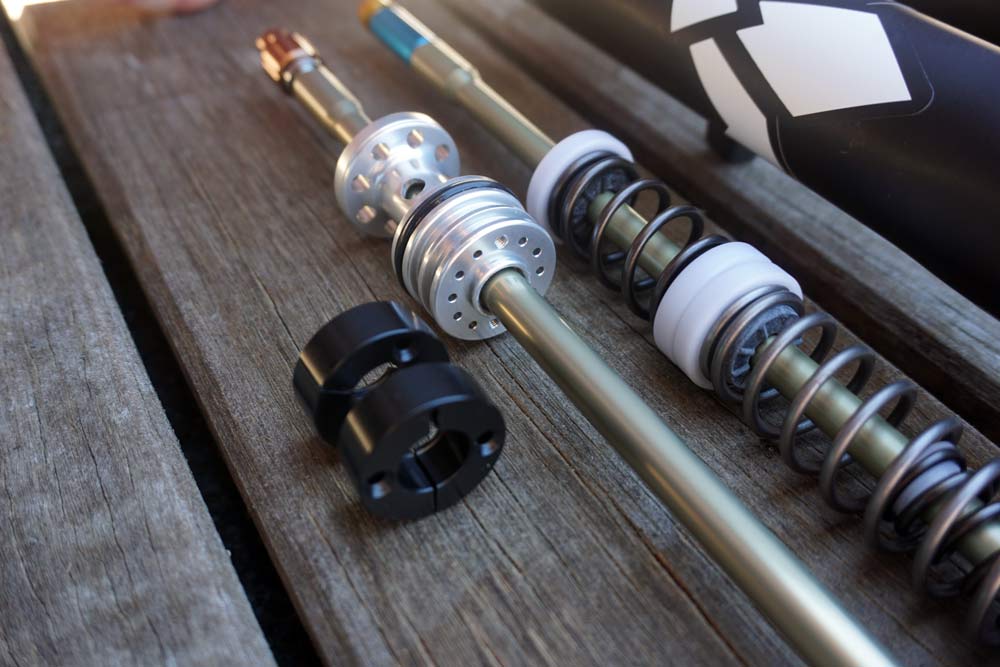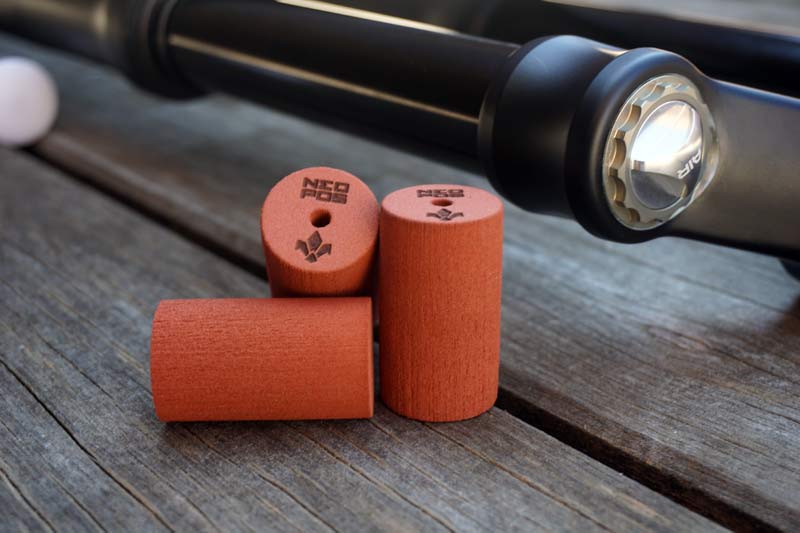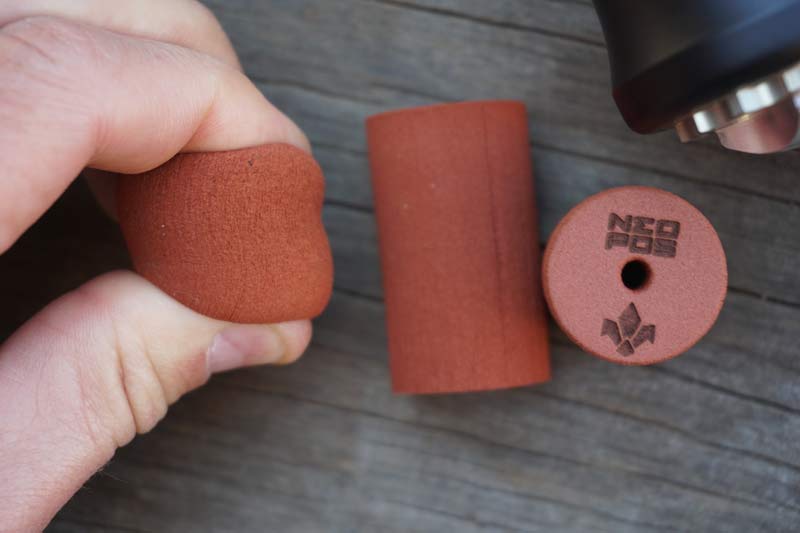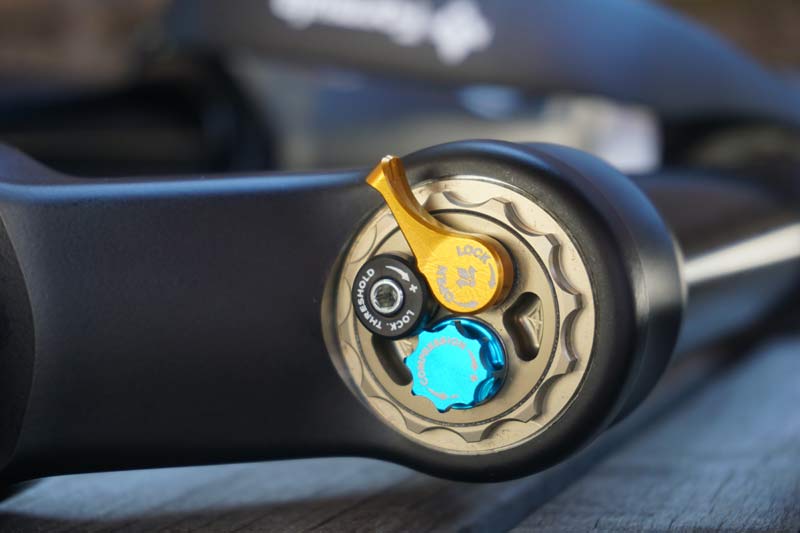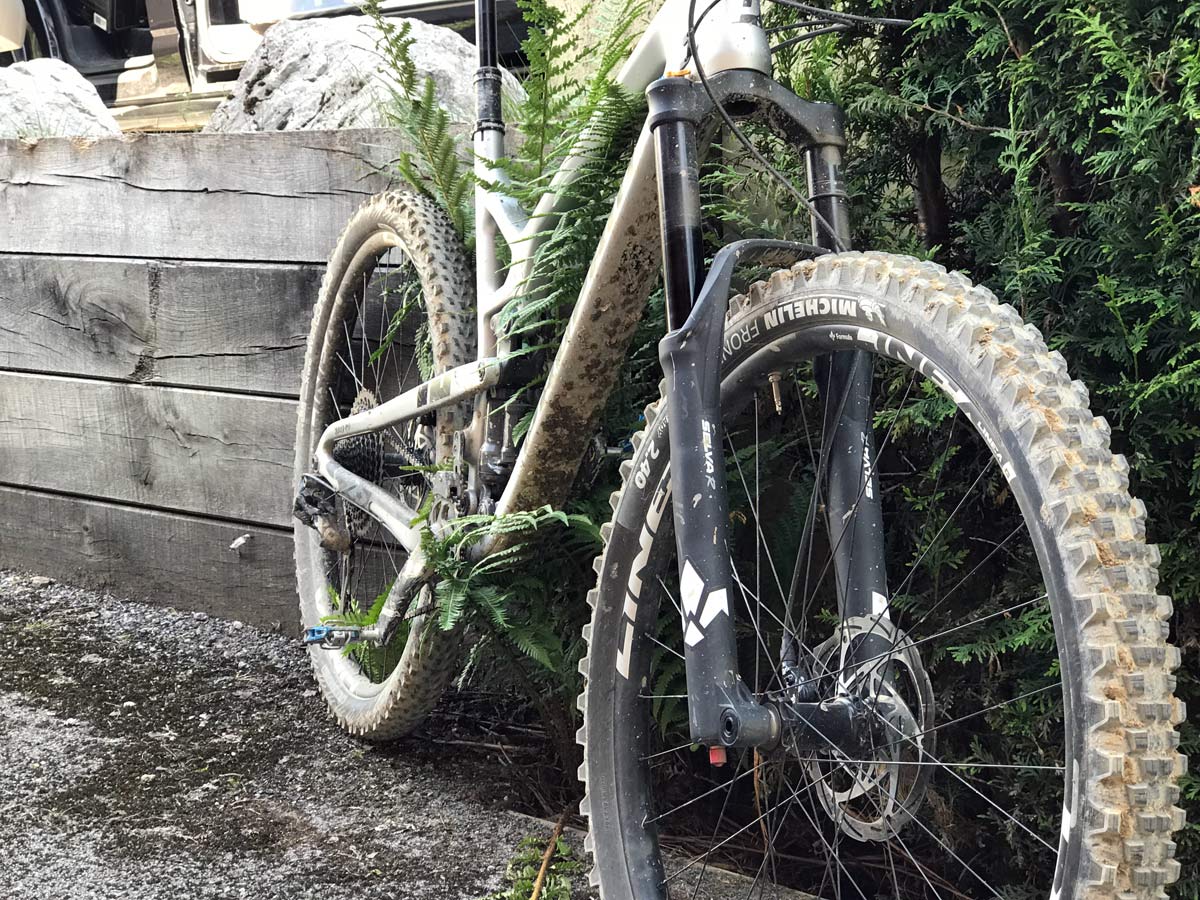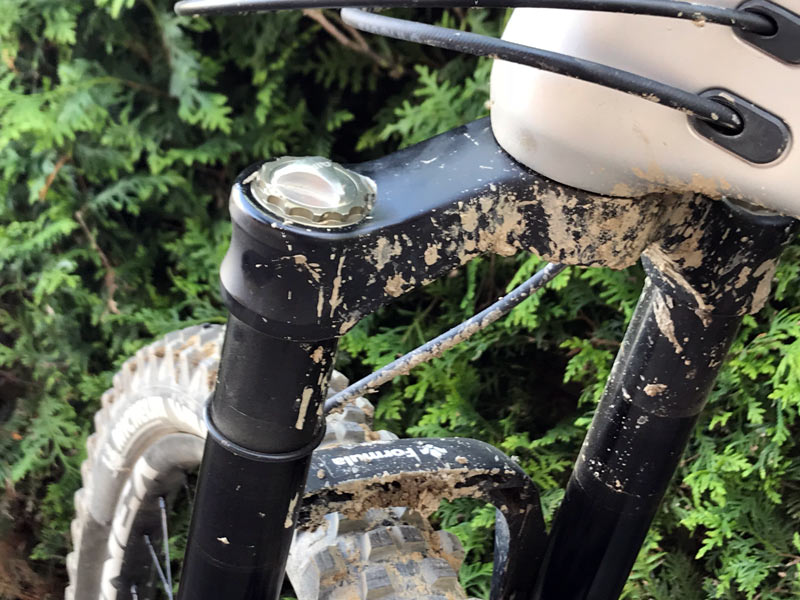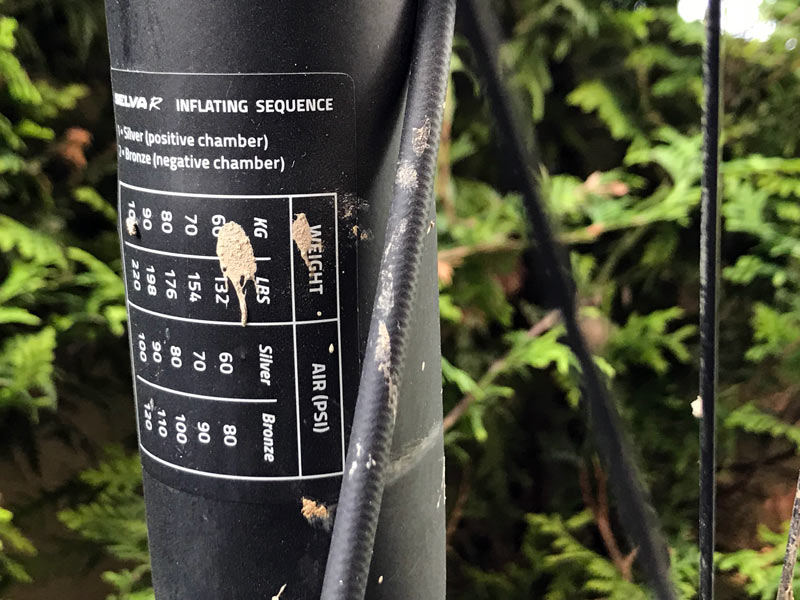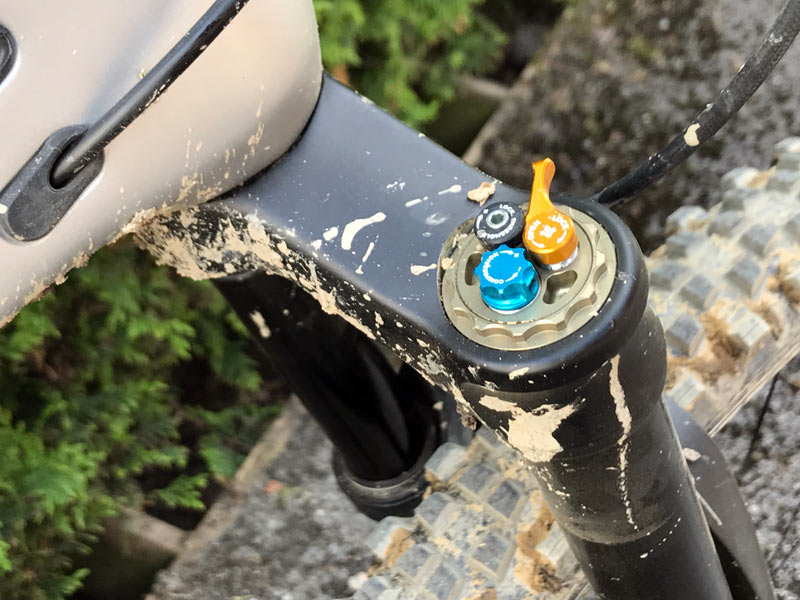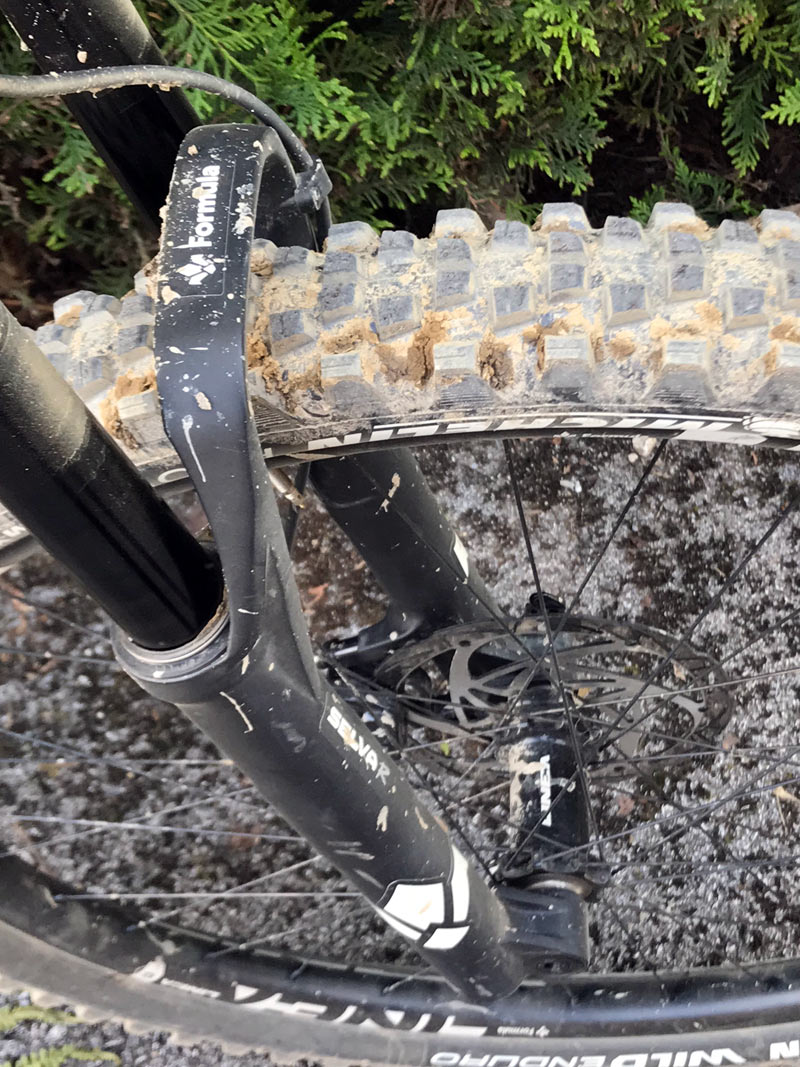Coming in September, the new top of the range Formula Selva R becomes their enduro champion with a dual air system. Building on the Selva S, this new “Racing” version replaces the coil negative spring with a negative air chamber. But lots of air forks use a negative air chamber, right? What’s the big deal? Formula’s system uses two completely separate, sealed air chambers. Unlike other current air systems that use a check valve or port to automatically fill the negative at the same time as the positive and keep them balanced, this one lets you fill them separately.
Shown above, the new air spring internals are shown on the bottom, next to the Selva S’s coil-sprung negative system, which also has a coil bottom out bumper. So, the dual air system saves a lot of weight simply by eliminating all that metal.
The design adds to Formula’s already impressive number of tuning possibilities by letting you adjust the pressures independently, giving you the ability to tune for more small bump compliance or a firmer top end. Add this to their swappable CTS compression circuits, NeoPos air volume spacers and the standard compression and rebound knobs, and you end up with a massive number of ways to get your fork riding how you want. As such, Formula says this fork is aimed at the advanced rider who isn’t afraid to fiddle with settings over back to back test runs.
The negative chamber is filled from the bottom, with air going through the shaft and out of that little hole under the piston (on right). The white piston with black rubber seal is the air piston that separates the positive from the negative. Notice how the air piston is pivoted on the shaft? That’s intentional, and allows it to move more freely as the fork bends under braking and impact forces…another unique feature for Formula’s forks.
Recommended air pressures are printed on the lowers (based on body weight), along with a reminder of the inflation sequence (top first, lock out the fork, then fill the negative, then unlock). The only trick is that if you want to check or set your positive chamber’s air pressure, you’ll need to empty the negative chamber first in order to get an accurate reading.
The design also lets you change the travel from 120mm up to 160mm. The black travel adjustment clips bolt onto the air piston, changing its starting position, which effectively reduces the travel.
It will hold up to three NeoPos soft air volume spacers. These are a closed cell foam, which means they compress along with the air to change the air volume dynamically as the fork compresses.
Check out our full video tech overview to see how they work and why Formula used this design.
It keeps the CTS Compression Tuning System, which is their replaceable compression circuit with seven different options to let you tune the medium- to low-speed compression damping by swapping in a different circuit. Sound complicated? It’s not. It comes with a standard circuit that’s comparable in performance to what most other brands’ forks come with. Where you’d want to fiddle with swapping circuits is when you’d otherwise consider sending your fork in for custom tuning. Except now you can do it yourself.
Pricing and claimed weights coming in September when the fork goes on sale. Basic features carry over from the Selva S, including 35mm stanchions, magnesium lowers, alloy crown and steerer, and 27.5/27.5+/29er versions.
Formula Selva R & NeoPos Ride Review
Formula had been hinting that they were up to something quite ingenious for some time. Mostly, it was the NeoPos air volume spacers, and this was our first chance to ride those. But first, they insisted we test the fork without them. For the ride, they marked our starting air pressure in both chambers, then sent us on our way.
After making one adjustment to get more travel, I had a couple runs on the Selva R down the natural trails and bermed park slopes at Les Gets before adding the NeoPos. With so many variables, a single day of riding is nowhere near enough to form a final impression of this fork, but here’s what I could discern: It’s really good. As a fan of the original Rockshox Dual Air system, I’m happy to see a return to independently adjustable air springs. Sure, a “solo” air system is quicker and simpler to adjust, but I’m a tinkerer.
Out of the 160mm of travel, my first run used just 131mm of travel. After reducing the positive air pressure by 5psi, that figure only increased to about 133mm. This despite trying to smash into the rocks and roots at speed. Yet the fork never felt harsh even though I was leaving the last 28-ish millimeters of travel on the table. And then it got weird.
I left the compression and rebound settings at Formula’s recommended settings, which were mostly wide open. Other than air pressure, the only thing I changed was adding one NeoPos volume spacer to the positive air chamber. On the trail, the fork did feel different. Better. A little more controlled and capable…which was on top of the already very well mannered performance. It’s hard to say if my last two runs felt faster because of the spacer, or because I was becoming more confident on the trails, but I definitely felt faster.
The weird part is that I used more travel. I say “weird” because technically, the fork should have felt firmer when adding an air volume spacer but keeping the air pressure the same. But it didn’t. All of which is to say this: Formula’s NeoPos system is interesting,seems promising, and deserves long term testing on home turf.
As for the rest of the fork, the same applies. It’s a stiff, capable chassis with a ton of user-friendly tuning options. Which is cool, as long as you have the patience and understanding to use, test, and refine them.
A few more things worth mentioning: The graphics on this pre-production fork will get a little smaller before they hit stores. And these are already far more minimalist than what Formula has done in the past.
Another change coming on all forks are lower profile compression and lockout controls for better frame clearance, and they get better markings on the top so it’s more clear what they do and how to use them. Lastly, we overhead plans for a Selva C (coil) coming in spring 2019.
